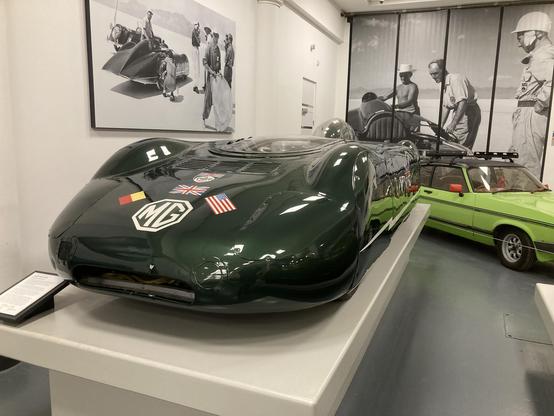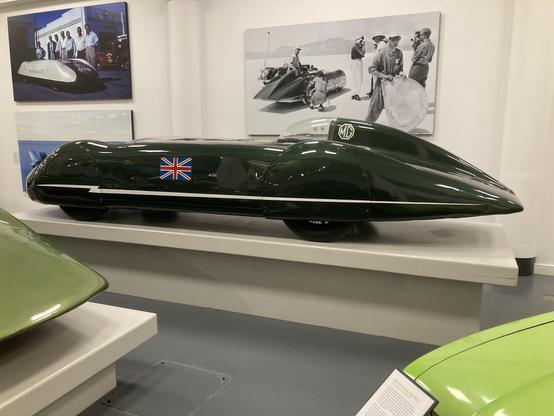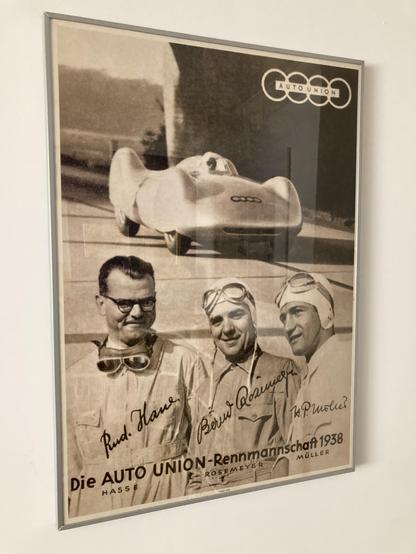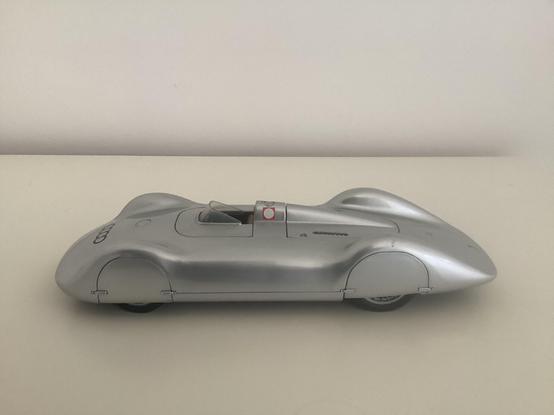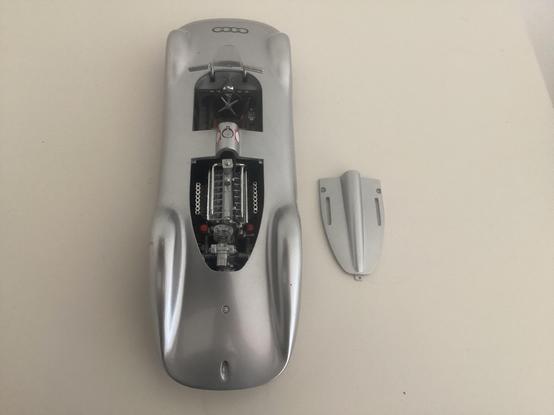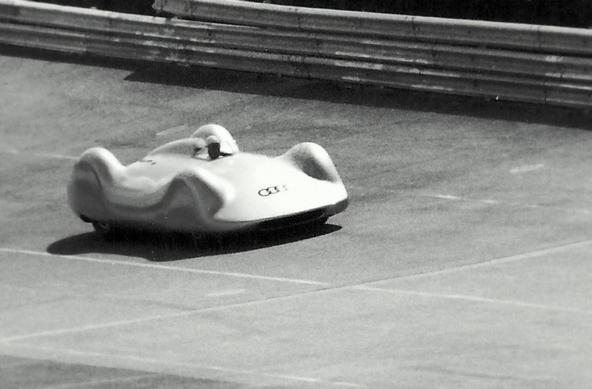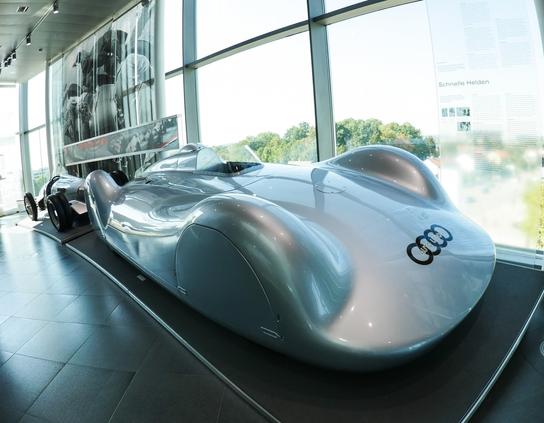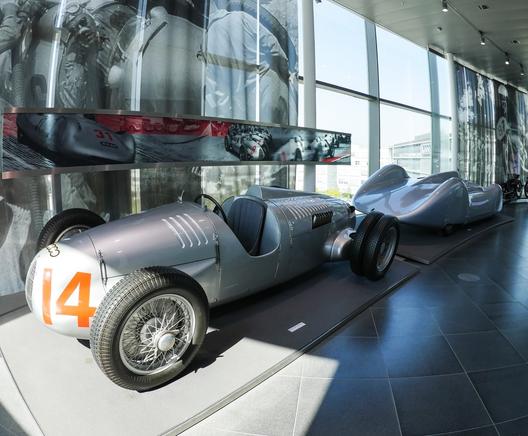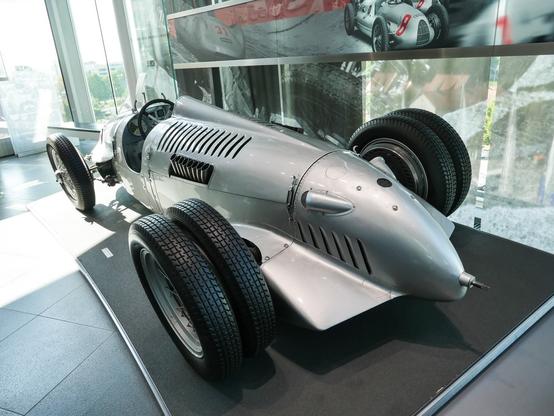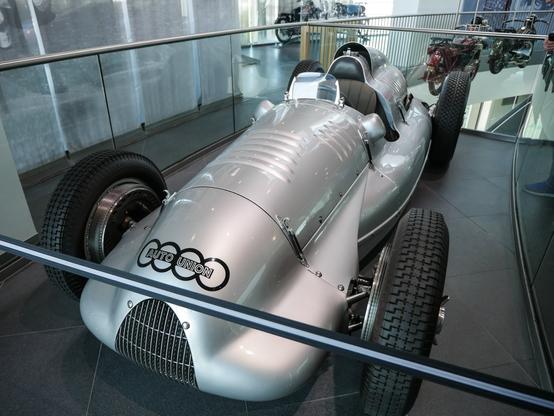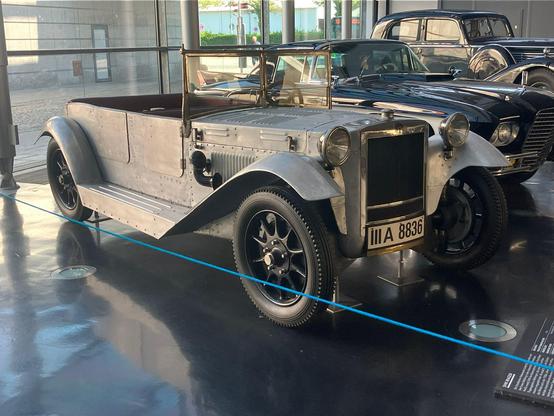Yesterday I found this snippet from a British Pathé newsreel from 1937. It shows Bernd Rosemeyer really whizzing along in yesterday’s Auto Union Typ C on the Autobahn. Also, a far less ‘aero’ MG. I suspect that seeing the Germans’ dramatic Typ C in 1937 gave the Brits a few ideas for their return to the autobahns with EX135 in 1938 and 1939! (2/2)
Slow-living cardiologically challenged Fenlander trying to cram less and less into each day. I write about cars but not as much as before. Electric is my thing (EV-ing since 2013). Life-long Labour member of a centrist persuasion. English of Welsh extraction. Interested in Germany (lived there twice). US politics/CNN fan. Like cats but I don’t have one myself. Studied at Oxford and Bayes. Live in the beautiful cathedral city of Ely. Background pic: North Shore beach at Skegness. #davidsdailycar
Today, we’re sticking with ‘streamliner’ bodywork and speed record attempts but we’re switching national racing colours from German silver to British Racing Green. Meet MG’s 1938 EX135, which like yesterday’s Auto Union Typ C, set records on the then-new German autobahns, although these were class records for cars with much smaller engines. Snapped at the British Motor Museum at Gaydon. (1/2)
The Stromlinie version of the Auto Union Typ C was also used for world speed record runs, reaching over 400 km/h on the then-new Autobahn between Frankfurt and Darmstadt. It was during one such run that the leading racing driver Bernd Rosemeyer lost his life. Rosemeyer and the car are featured in this reproduction 1938 poster, which I think I got from the Horch museum in Zwickau. (2/2)
The German silver racing colour scheme is most commonly associated with Mercedes but has also been used by other manufacturers, including Audi and, as here, its forerunner Auto Union. The Typ C was originally developed as an open-wheel racer like its near contemporary, yesterday’s Mercedes W154. But this enclosed aerodynamically slippery ‘Stromlinie’ (streamline) bodywork was created for racing at Berlin’s high-speed Avus circuit.
@stevewfolds @vwdasher Ah yes - the Porsche museum is very good too. It used to be surprisingly small and unflashy but the new one (well not so new now, I suppose) is great.
@davidwilkins @vwdasher Porsche Museum in Stuttgart was a treat.
@vwdasher has posted these great pictures of silver Auto Union race cars, including a 'streamline' car, from the Audi museum.
https://mastodon.online/@vwdasher@weird.autos/114590507384526840
and I saw it in Montlhery after the first win of the R8 in Le Mans
@vwdasher Thanks!
The Stromlinie version of the Auto Union Typ C was also used for world speed record runs, reaching over 400 km/h on the then-new Autobahn between Frankfurt and Darmstadt. It was during one such run that the leading racing driver Bernd Rosemeyer lost his life. Rosemeyer and the car are featured in this reproduction 1938 poster, which I think I got from the Horch museum in Zwickau. (2/2)
The German silver racing colour scheme is most commonly associated with Mercedes but has also been used by other manufacturers, including Audi and, as here, its forerunner Auto Union. The Typ C was originally developed as an open-wheel racer like its near contemporary, yesterday’s Mercedes W154. But this enclosed aerodynamically slippery ‘Stromlinie’ (streamline) bodywork was created for racing at Berlin’s high-speed Avus circuit.
The unpainted aluminium bodywork of yesterday’s SHW prototype reminded @peterrenshaw of the tradition of German race cars using silver bodywork, which legend has it began when Mercedes removed the paint from one of its aluminium-bodied racers to save weight. This is the magnificent Mercedes W154 Grand Prix car from 1938/9, which I snapped at Techno Classica Essen in 2014.
The unpainted aluminium bodywork of yesterday’s SHW prototype reminded @peterrenshaw of the tradition of German race cars using silver bodywork, which legend has it began when Mercedes removed the paint from one of its aluminium-bodied racers to save weight. This is the magnificent Mercedes W154 Grand Prix car from 1938/9, which I snapped at Techno Classica Essen in 2014.
Today, a third and final car from the Zeppelin museum in Friedrichshafen. This pretty spectacular 1925 effort was a technology show case prototype from the still extant German engineering company SHW. It featured an early type of aerospace-style unibody construction with riveted aluminium panels, and weighed just 700 kg. Other innovative features included then-rare independent suspension. (1/2)
@peterrenshaw Now you have raised the subject, I'll try to do some more posts on it...
@lionelb Interesting thought. If you want more detail, there’s a good talk on YouTube about the car’s origins and tech from one of the curators of the Zeppelin museum - also the story about what happened to it after 1925.
It’s in German but I think you can get (auto-generated - not sure how good) English subtitles.
The transmission for the SHW car.came from ZF, another important part of Friedrichshafen’s huge engineering tradition, alongside Maybach, MTU (later part of Rolls Royce plc) and the Zeppelin story.
This is what SHW is up to these days - mainly seems to be braking systems:
https://www.shwperformance.com/about
(2/2)
Today, a third and final car from the Zeppelin museum in Friedrichshafen. This pretty spectacular 1925 effort was a technology show case prototype from the still extant German engineering company SHW. It featured an early type of aerospace-style unibody construction with riveted aluminium panels, and weighed just 700 kg. Other innovative features included then-rare independent suspension. (1/2)
